MS and Catheterization, Part 2: Outside the Hospital
Written by |
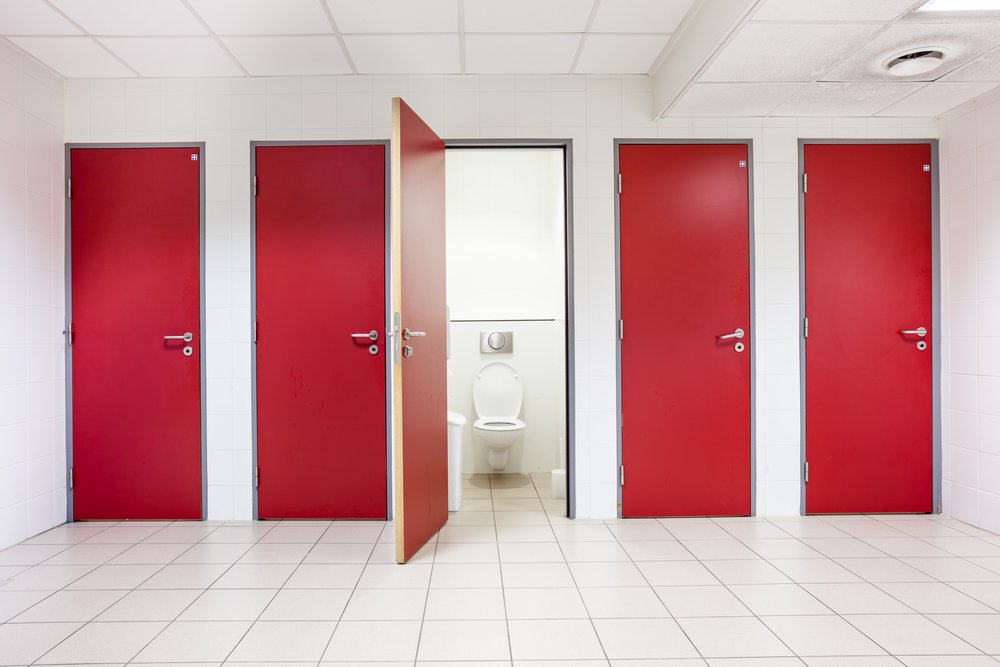

Catheterization training in the hospital did not prepare me for how to manage on a daily basis. In my last column, I described how I ended up in the hospital unable to urinate at all. In this column, I will cover more details about what I learned along the way that made life requiring a catheter almost seem normal.
Bathtub catheterizing
One problem with self-catheterizing in a bed, bathtub, or in most bathrooms, is the total inadequacy of lighting. Men, for obvious reasons, do not have the difficulty with catheterizing that women do.
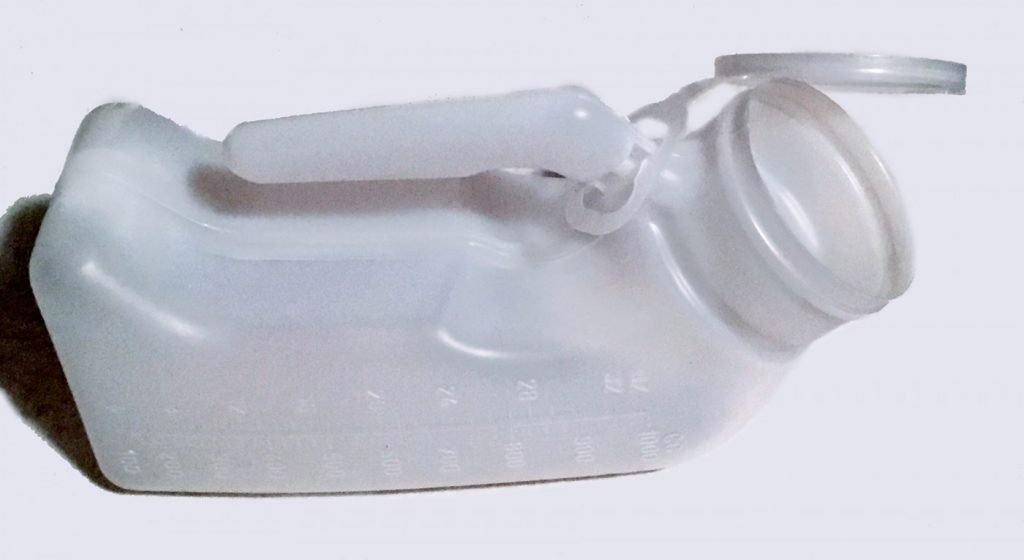
Bed pan (aka jug): It’s for use with longer catheters by women while lying down.
I used the bathtub because the hard surface was better than a soft bed. I had a desk lamp for additional light that I put in the tub with me. The tub edge provided a safe clean place to lay supplies. If the jug spilled or urine leaked out of the long tube on either end, it was on an easy-to-clean, hard surface meant to get wet. This felt ridiculous and embarrassing, but when it is the only way you know you can urinate, you get over that feeling fast. If you need to do this in a bed, absorbent disposable cloths called Chux help with spills.
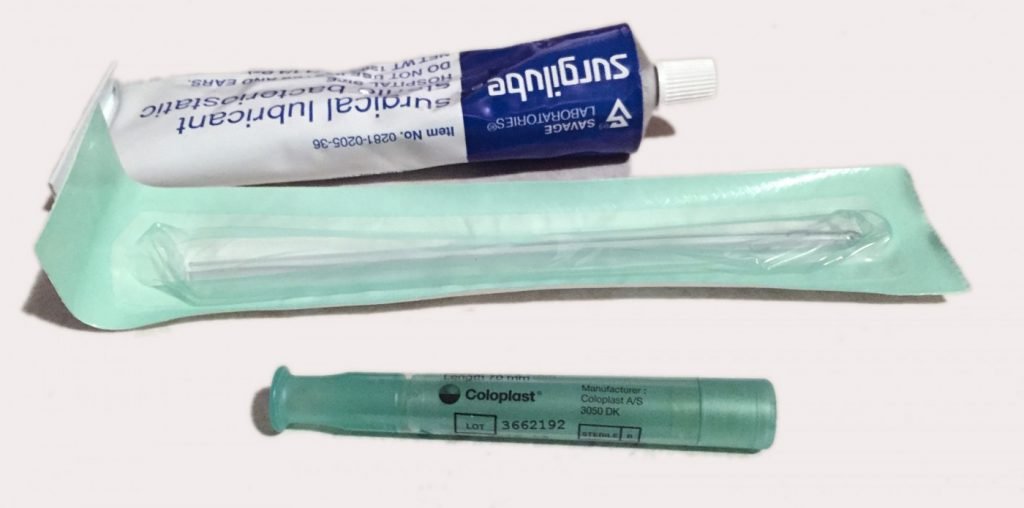
Portable catheter: The longer one requires sterile lubricant. In the foreground is one that’s self-lubricating and opens with a twist and a pull.
Catheters come in various lengths, but I didn’t realize this at first. The nurses only gave me long ones that required lying down. Which was fine if you are bedridden, like I was in the hospital, but not good for daily use. Unfortunately, it took me many weeks before my brain kicked in to thinking about this, and I realized there must be short catheters, too. I spent the first month lying down in the bathtub and using the long catheters and jug just like in the hospital.
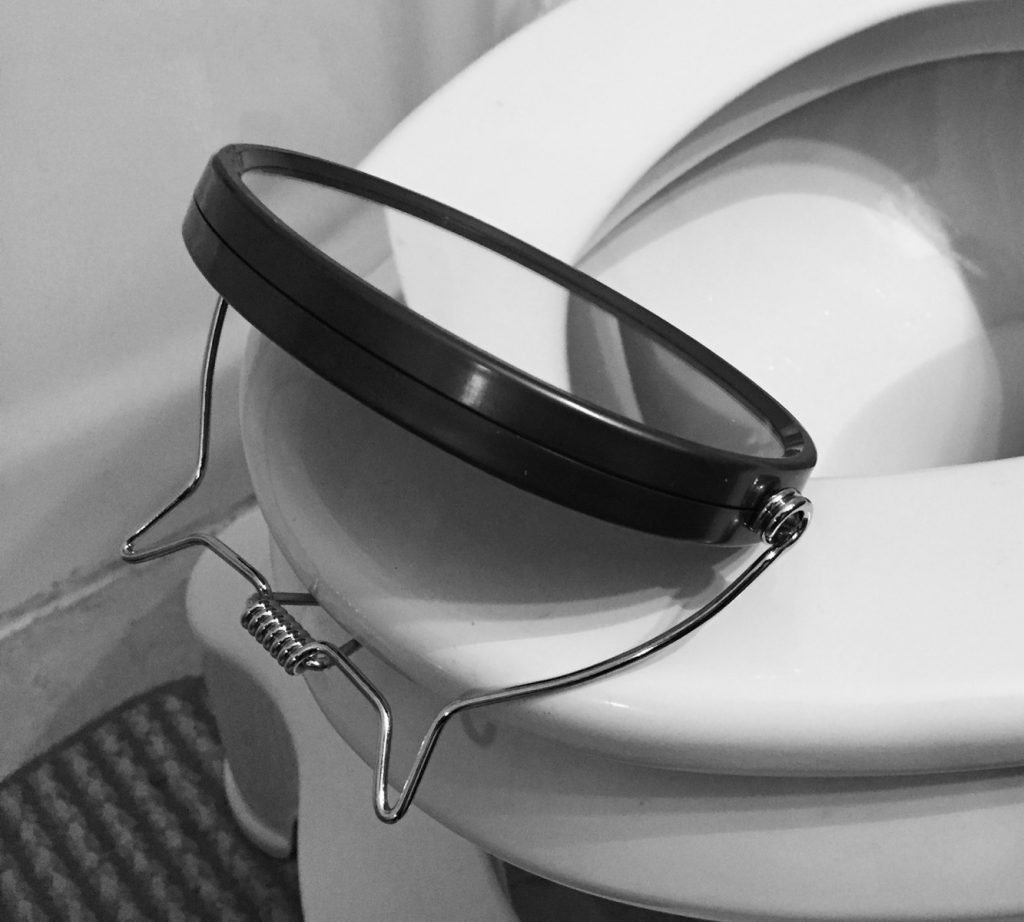
How I hook a mirror onto a toilet seat for visual aid while catheterizing.
Mirrors for women
The hospital gave me a kit to start me off with the long, tube catheters and a small, circular mirror that can clip on the rim of a traditional home toilet seat. This is a problem for public toilets because they have a cut-away in the front. It requires a sideways, awkward placement.
Recently, for this column, I checked online and found some other mirrors, including one with a bendable, flexible neck connecting to the mirror. It attaches with a suction cup to stick on the toilet bowl. There is an ick factor there, but dampening the suction cup with water from the sink (instead of licking it, for example) would work.
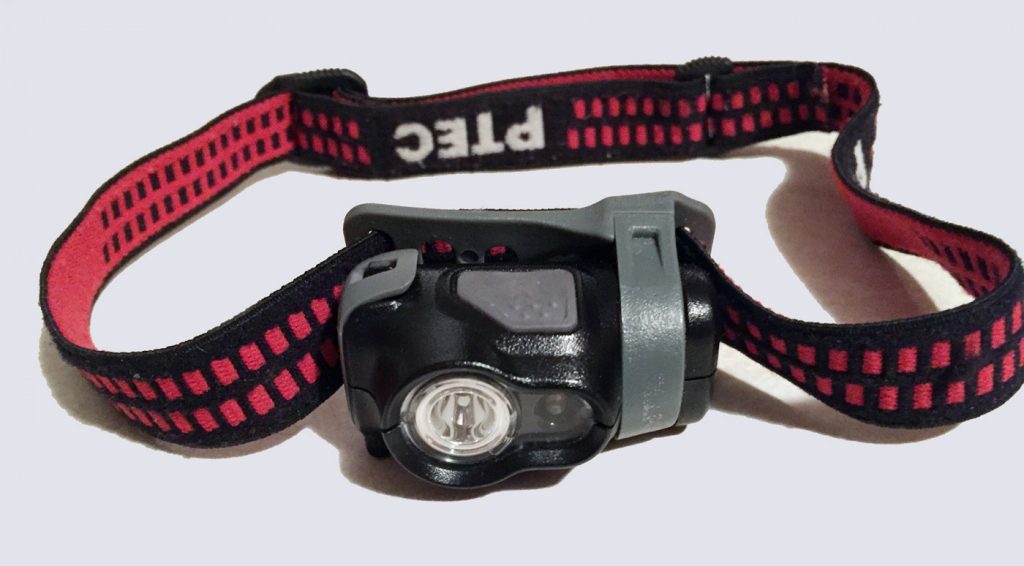
Headlamps are a lifesaver, even for in-home use while catheterizing. The light adjusts to several angles and reflects on the mirror to cast light helping women see the target.
Light, or rather, lack of light
Most bathrooms, especially public toilets, do not have adequate lighting to be able to see the urethra with most mirrors. Plus, you are juggling lubricant and sterile wipes while unwrapping the catheter packaging. If you manage to hook a mirror onto the side of the split toilet seat, and haven’t dropped anything, you will discover that there is not enough light to see anything. What little light exists is blocked when you lean forward to see in the mirror. Lack of light is a huge problem.
Fortunately for me, I have a very smart girlfriend who suggested a head-mounted light, like ones hikers use. I even already owned one, but I never thought to use it. This light makes all the difference in the world. I highly recommend buying one of the many possible versions. Mine has an elastic band that easily goes over the head and stays in position. It is small, very portable, and has a very bright multi-directional light. The light shines on the mirror and reflects upward to light the urethra for insertion. It runs on two AAA batteries.
In addition to all of the above supplies, I carry wipes to clean before attempting to cath. Only use one side once. Tear in half to maximize economy. I bring hand sanitizer for my hands, even if there is a sink to wash my hands. By the time you get in a public stall, your hands need to be cleaned again before touching sterile catheters.
If the opportunity arises, please support better lighting in bathrooms for women, especially in the stalls. A non-split seat for ladies’ toilets would be helpful. Shelves, or at the very least, flat surfaces on toilet paper dispensers or sanitary napkin disposal bins would be very helpful to lay out supplies!
***
Note: Multiple Sclerosis News Today is strictly a news and information website about the disease. It does not provide medical advice, diagnosis, or treatment. This content is not intended to be a substitute for professional medical advice, diagnosis, or treatment. Always seek the advice of your physician or other qualified health provider with any questions you may have regarding a medical condition. Never disregard professional medical advice or delay in seeking it because of something you have read on this website. The opinions expressed in this column are not those of Multiple Sclerosis News Today, or its parent company, Bionews Services, and are intended to spark discussion about issues pertaining to multiple sclerosis.






Marcie Schonborn
Thank you so, I am about to learn how to do this as I have just been confirmed to have bladder issues ?. Didn't need that oh so wonderful test, as I've been hospitalized X2 with urine retention that has brought on exasabations in the past six months, but with confirmation in hand, I am now about to be taught the joys of self Cath.
Your ideas will come in handy and I plan on passing them on to my teachers so they are better prepared for easier access in a safe, sterile way.
Hugs to you for passing on Warrior tips?
One other thing you might want to know, when you have to give a urine sample, it is hard to do that with a cath. I usually just had the nurse do it for me to make sure to get the best uncontaminated sample. Never hesitate to ask for help like that. Several times when I went in to ER I went straight to lab for testing and they didn't have a nurse on duty to help. In that case, I had success with cathing into a "hat" which is the nickname for a plastic bowl that has wings that rest on the toilet seat and measuring marks in the bowl. So if that situation arises, ask people to get a "hat." I should have included a photo of it as well, but I expect a web search will show what I mean.
Anne Lucas
I've had MS for 26 yrs, started straight cathing about 10 yrs ago. I started by setting up a counter-top makeup mirror on a chair in front of the toilet (at home). Eventually I learned where the urethra was, and was able to do it without the mirror, so eventually you won't need it.
(This won't help in public toilets though.)
Urine samples are so much easier with the "hat"! I just learned this last month, thanks to a lab tech. I was worried that the "hat" wouldn't be sterile enough and would contaminate the specimen, but it worked fine. The tech said it was clean enough because it was new- she had just unwrapped it for me.
Other tips: more polished catheters slide in more easily.
I tried cathing without lube a few times (wanted to cut down on supplies, I guess): results in irritation though- I don't recommend!
Because I am so seriously vulnerable to UTIs I do not dare to use the "hope and poke" method. No matter how practiced, the risk of one tiny germ is too great. I am also allergic to a number of antibiotics so have limited choices for cures. I have never had a wax, but have used scissors to trim hair to prevent stray germ possibility from transferring to the catheter. I really hate UTIs and with the antibiotic resistant strains plus my allergies, it is somewhat terrifying to think about.
rose
Thank you for your input. I also could not urine due to my MS and found out that I had to sit on my bathroom floor to use a catheter while urine went all over the place. Doing it in the tub is easier and it makes cleanup a breeze.
The longer cath tubes are best for in the tub because they can reach from you into the plastic container pictured. I place the mirror strategically to be able to see, with the help of the desk lamp angled for maximum light. There are also Chux pads that could be used to absorb some spillage, but it is probably easier (and cheaper) just to rinse the tub. I do not recall what the scientific concept is that causes the urine to just flow into the tube and out to the jug; it just does.
Karen Garner
when my urologist originally gave me catheters to try they were the longer male catheters, and she suggested sitting in the toilet. I had NO luck with it. My retention was so bad that she was suggesting a supra pubic catheter, so I decided to try intermittent again and what a change! Now there were shorter women's catheters and for me the coloplast cath shown in above picture was the best. Also, make sure that you are using the correct size!!! My office was sending me home with more 14 size samples, and as it turned out a 12 was what I needed. If you have problems inserting, try for a stiffer cath and make sure it is small enough. Seemingly 14 is a more common size, but it was difficult to insert and painful for me. There are many types now, get samples from you supplier!!
Nicole H.
Where do you get the mirror pictured, which hooks on to the toilet seat?
Karen Garner
check out the bright mirror. small mirror with its own led light, recharges with usb cord. get it from community medical. as stated earlier, the split front toilets in many public restrooms make it a little odd to do, but I am able to sit at an angle and it isn't really a problem.
Carol Burdick
Where can I buy mirror for Ms that attaches to toilet
Deb Smith
A blue pad on the bed helps with a leakage. Also, I’ve watched a YouTube video from The Empowered Para who is a T6 paraplegic, and she uses a 9” zipper in the crotch of all her pants - running horizontally - which allows her to urinate with a catheter from her wheelchair. It is a very efficient method to pee without having to transfer to the toilet. She has a seamstress put the zipper in all her pants. Because she is sitting in her chair, no one can even see the zipper - very discrete. I encourage you to watch her YouTube video, or go to her website - EmpoweredPara. I’ve learned a lot.